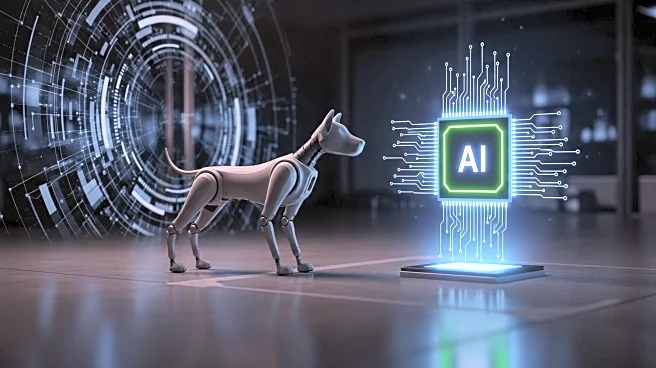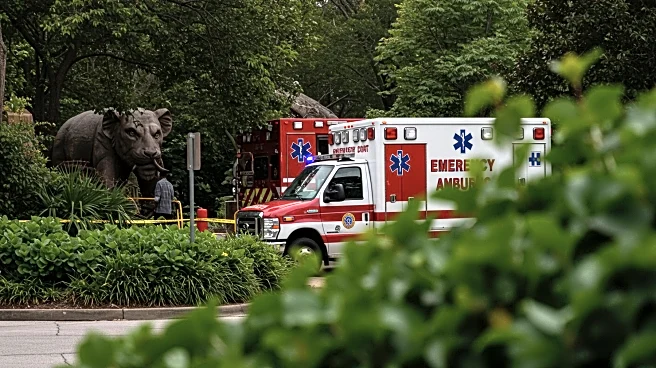What's Happening?
A study conducted by the University of Haifa, published in Royal Society Open Science, has demonstrated that an artificial intelligence model can predict when a sniffer dog identifies a target scent with greater accuracy than human trainers. The AI model, developed by Prof. Anna Zamansky and her team, achieved a 77% accuracy rate compared to 46% for professional trainers. The model analyzes subtle tail movement patterns that are typically invisible to the human eye, providing real-time insights into canine behavior. Detection dogs are crucial in police, customs, military, and rescue operations due to their ability to identify substances like explosives and drugs. The study involved eight dogs trained to identify a synthetic scent, with their movements recorded and analyzed using advanced computer vision technology. The AI model's predictions were compared to assessments by 190 experienced trainers, with the AI significantly outperforming the trainers, especially as scent concentration decreased.
Why It's Important?
The integration of AI into sniffer dog training could revolutionize detection capabilities in security operations. By enhancing the accuracy of scent detection, AI models can improve the efficiency and reliability of detection dogs, which are vital in identifying substances that humans cannot detect. This advancement could lead to more effective security measures in various sectors, including law enforcement and military operations. The ability to predict a dog's success in scent detection could also streamline training processes, reducing time and resources spent on training. As AI technology continues to evolve, its application in animal training and behavior analysis could expand, offering new tools for enhancing security and operational efficiency.
What's Next?
The research team is collaborating with the Defense Ministry’s Chemistry and Biology Unit to explore further applications of AI in security dog training. This collaboration could lead to the development of more sophisticated AI models that enhance detection capabilities across different environments and scenarios. As AI technology becomes more integrated into security operations, stakeholders such as law enforcement agencies and military units may adopt these tools to improve their detection and response strategies. The ongoing research and development in this field could also prompt discussions on ethical considerations and the role of AI in animal training.
Beyond the Headlines
The use of AI in sniffer dog training raises questions about the ethical implications of relying on technology to interpret animal behavior. While AI can enhance detection capabilities, it is essential to consider the welfare of the animals involved and ensure that technology complements rather than replaces human expertise. Additionally, the integration of AI into security operations may lead to broader discussions on privacy and data security, as advanced technologies become more prevalent in monitoring and analysis.











